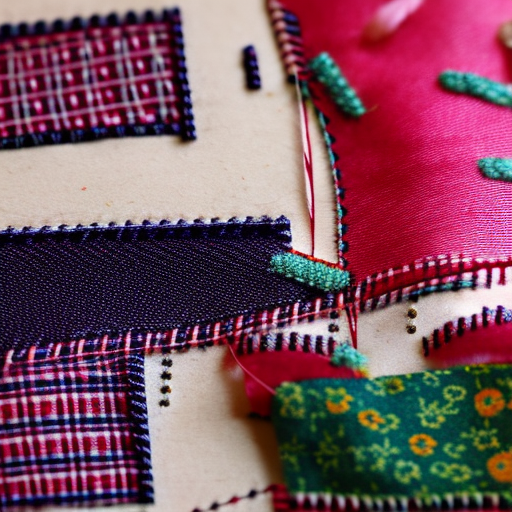
Stitch 1: Straight Stitch
The straight stitch is one of the most basic and commonly used stitches in sewing. It is primarily used for
joining two pieces of fabric together. It is sewn by inserting the needle straight down and then up again,
creating a simple line of stitches.
Usage: Everyday sewing, seams, hems, topstitching, gathering.

Stitch 2: Zigzag Stitch
The zigzag stitch is a versatile stitch that creates a zigzag pattern on the fabric. It is commonly used to
prevent fraying edges and to provide stretchability in garments. It is sewn by moving the needle back and
forth in a zigzag motion while sewing.
Usage: Finishing raw edges, appliqué, buttonholes, elastic installation.

Stitch 3: Blind Hem Stitch
The blind hem stitch is an almost invisible stitch used for hemming garments or curtains. It is sewn by
taking small, nearly invisible stitches on the top layer of fabric, while picking up a tiny bit of the
folded-under hem on the underside.
Usage: Hemming, curtain making, finishing edges with an invisible stitch.

Stitch 4: Backstitch
The backstitch is a strong and durable stitch used for seams requiring extra strength, such as attaching
buttons, securing zippers or stitching decorative details. It is sewn by stitching backward and then
forward, overlapping each stitch.
Usage: Sewing buttons, zippers, topstitching, attaching patches.

Stitch 5: Overlock Stitch
The overlock stitch, also known as a serger stitch, is a professional-looking stitch that finishes raw edges
of fabric. It simultaneously trims, stitches, and overlocks the fabric layers, preventing fraying and adding
durability.
Usage: Seam finishing, knit fabric construction, creating professional-looking edges.

Stitch 6: Basting Stitch
The basting stitch is a long, temporary stitch used for holding fabric layers together before final stitching.
It can easily be removed afterward. Basting stitches are generally longer in length and are sewn with low
tension.
Usage: Gathering, fitting adjustments, temporary seams.
These are just a few examples of sewing stitches. There are many other stitches available, each with its unique
purpose and application. Learning different stitches can greatly expand your sewing skills and allow you to create
various designs with precision.
Remember, practice makes perfect, and with time and patience, you can master these stitches and become a skilled
seamstress!




